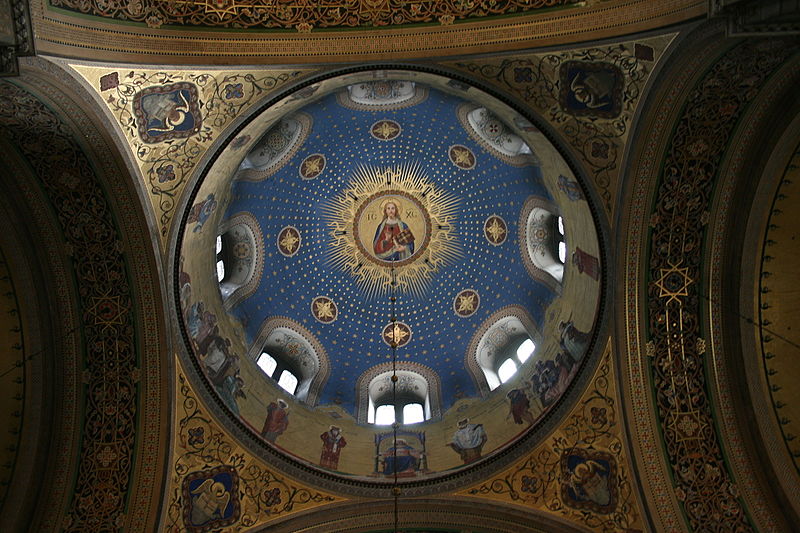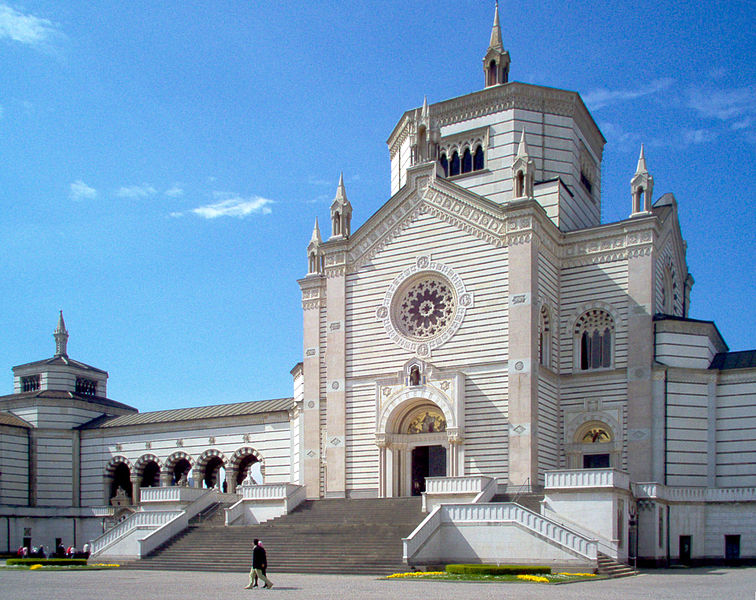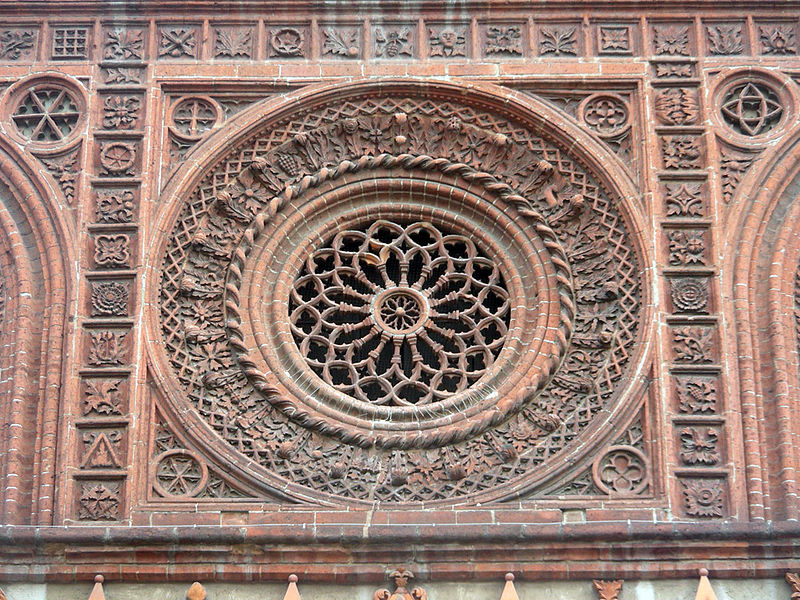Lombard architect Carlo Maciachini died on 10 June 1899 in Varese, close to the town where he was born 81 years earlier, on 2 April 1818.
Maciachini’s first training was as a carpenter and cabinetmaker, crafts he carried on even as he studied architecture at the Academia di Brera in Milan.
Despite a strong interest in the canon of Western architectural history, Maciachini soon developed an independent and eclectic style whose influences range from the Gothic to the early Renaissance.
The architect’s first important work was the Greek Orthodox church of San Spiridione in Trieste (1859–69), aptly constructed in a neo-Byzantine style.
Later on, he took part in the competition for the Cimitero Monumentale in Milan, designing an Italianate neo-Gothic project and supervising its construction from 1863 to 1887.
Maciachini was also involved in the completion and restoration of extant structures, demonstrating a respectful understanding of their original design and striving for formal unity. Examples are the facades of Santa Maria del Carmine (1880) in Milan, of Santi Flavio e Giorgio in Voghera, and of Pavia Cathedral (1893–5), for which he had also designed the dome (1883–6). In these buildings, Maciachini followed the common principle of ‘analogical restoration,’ so that his additions are often indiscernible from the original structure.
Reference: Lucio Franchini, ”Maciachini, Carlo,” Grove Art Online. Oxford University Press, www.oxfordartonline.com/subscriber/article/grove/art/T052849.
San Spiridione in Trieste (1859–69). Photo: Zairon on Wikimedia Commons.
High altar, San Spiridione in Trieste (1859–69). Photo: Marco Almbauer on Wikimedia Commons.
Dome, San Spiridione in Trieste (1859–69). Photo: Marco Almbauer on Wikimedia Commons.
Famedio building, Cimitero Monumentale, Milan (1863). Photo: Wikimedia Commons.
Church of Santa Maria del Carmine, Milan, Italy (1880). Photo: Giovanni dall’Orto on Wikimedia Commons.
Church of Santa Maria in Strada, Monza (1870). Photo: Francescogb on Wikimedia Commons.
Detail of the rose window, Church of Santa Maria in Strada, Monza (1870). Photo: Francescogb on Wikimedia Commons.
Pavia Cathedral (1883–6 and 1893–5). Photo: R. Montagna on Wikimedia Commons.







